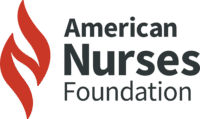Q I’m a clinical manager for a pediatric critical care unit. We’ve recently had a significant increase in end-of-life care. I’m proud of our nurses and the skillful, compassionate support they provide to patients and families during these tragic events. In an emotional support debrief, nurses expressed a desire for more opportunities to pause and reflect on meaning and purpose in their challenging work. How do I regularly schedule time to support nurses in ways they value while also adhering to our organization’s budget and productivity expectations?
A Thank you for your leadership and support for your nursing team. You describe important values in the tension between supporting nurses in their unique occupational challenges while also responsibly managing resources. At a glance, these can seem diametrically opposed. However, creating a supportive sense of community and connection need not violate your commitment to budget management. You can enact opportunities to orient to meaning and purpose, to shared identity and belonging, and to unit and organizational mission through small rituals that deliver benefits similar to your debriefing forum.
Rituals, frequently associated with religious observances or rites of passage, have deep, prehistoric roots, which indicate that humans have long sought connection and meaning-making in moments of joy, grief, and uncertainty. Nurses participate in patient-centered rituals in various settings. For example, organ donor honor walks, the ringing of a bell to mark a cancer treatment milestone, discharge celebrations after a long hospitalization, and celebrations of life and of birth. The nursing profession also should pay more attention to the importance of nursing-centered rituals.
Meeting your patients spiritual needs
In the context of your unit, you might consider rituals surrounding transitions into and out of work. For instance, you could integrate a gratitude ritual into shift huddles to recognize successes during that shift and intentionally wish those well who are assuming care. Those leaving work could engage in a ritual of truly claiming their wins, however large or small, as well as noting what didn’t go smoothly and then letting go of thoughts about those imperfections. Anyone experiencing a particularly thorny event could begin to transform it by writing it on water-soluble paper and watching it dissolve before heading home. You also could encourage nurses to set an intention for their shift, such as kindness, presence, well-being, or patience. They could then reflect on that intention during handwashing, which would elevate an important safety practice into a meaningful ritual.
Rituals like these can be adopted individually and collectively to build connection, inclusivity, belonging, mutual support, meaning, purpose, and shared professional identity. Provision 5 of the Code of Ethics for Nurses with Interpretive Statements (nursingworld.org/coe-view-only) notes that “nursing care addresses the whole person as an integrated being; nurses should also apply this principle to themselves.” As supplements to your supportive debriefing forums, rituals can provide daily, in-the-moment ethical practices that honor the wholeness and humanity of all team members.
— Response prepared by Heather Fitzgerald, DBe, MS, RN, a member of the ANA Ethics and Human Rights Advisory Board.
American Nurse Journal. 2024; 19(7). Doi: 10.51256/ANJ0724
Reference
Prestia AS. Nurse leader cultivation of rituals: Providing a sense of community and connection. Nurse Leader. 2022;20(4):340-3. doi:10.1016/j.mnl.2022.01.006
Submit at ethics@ana.org


















